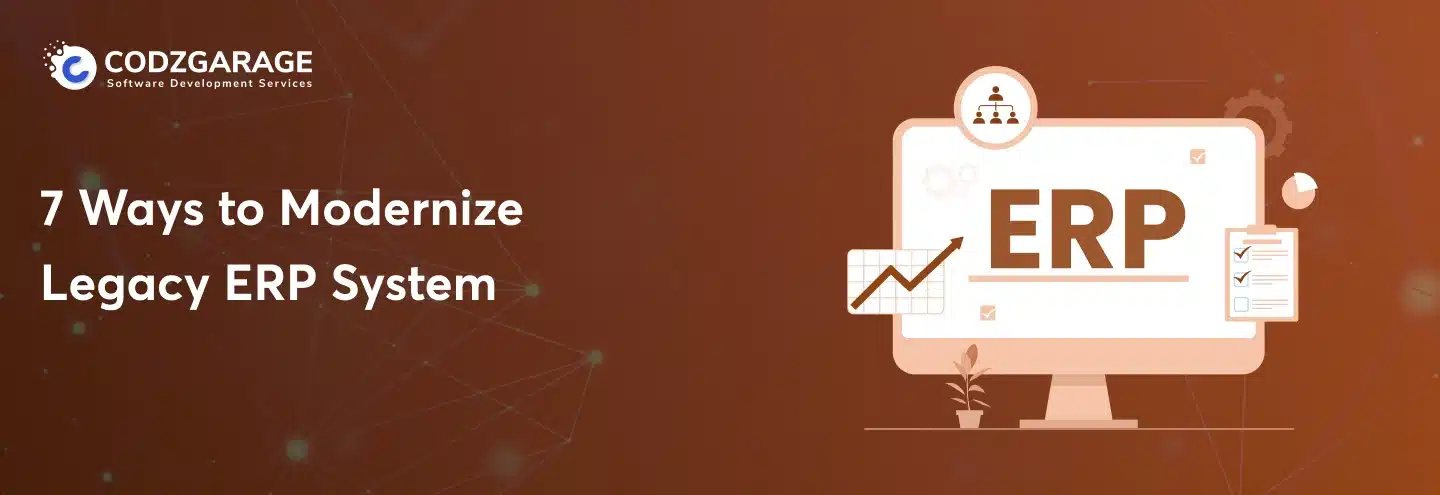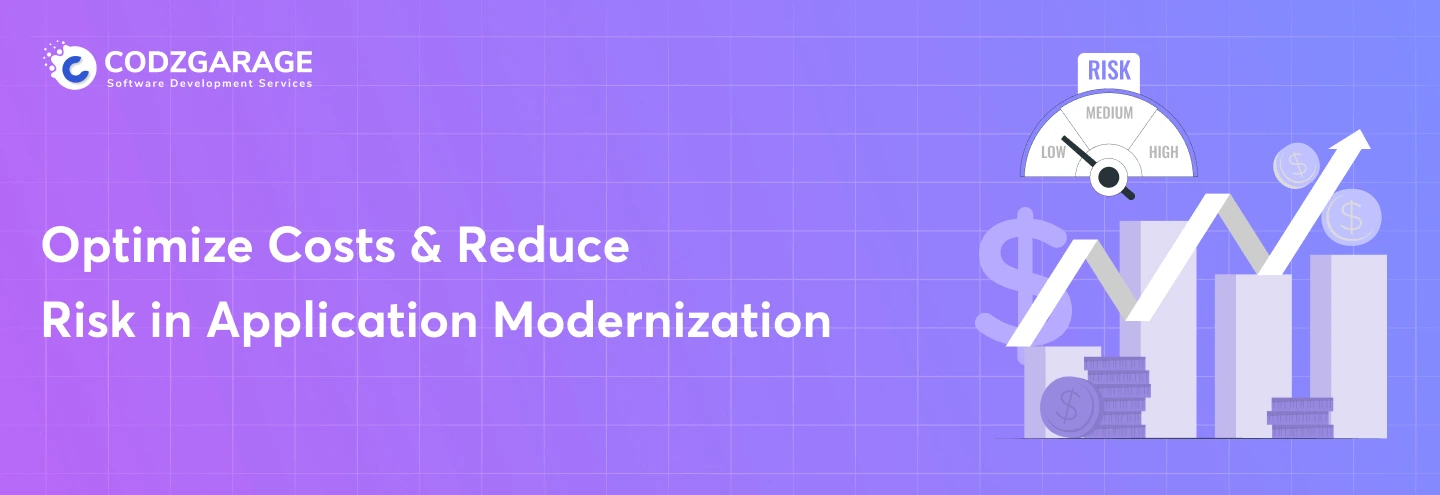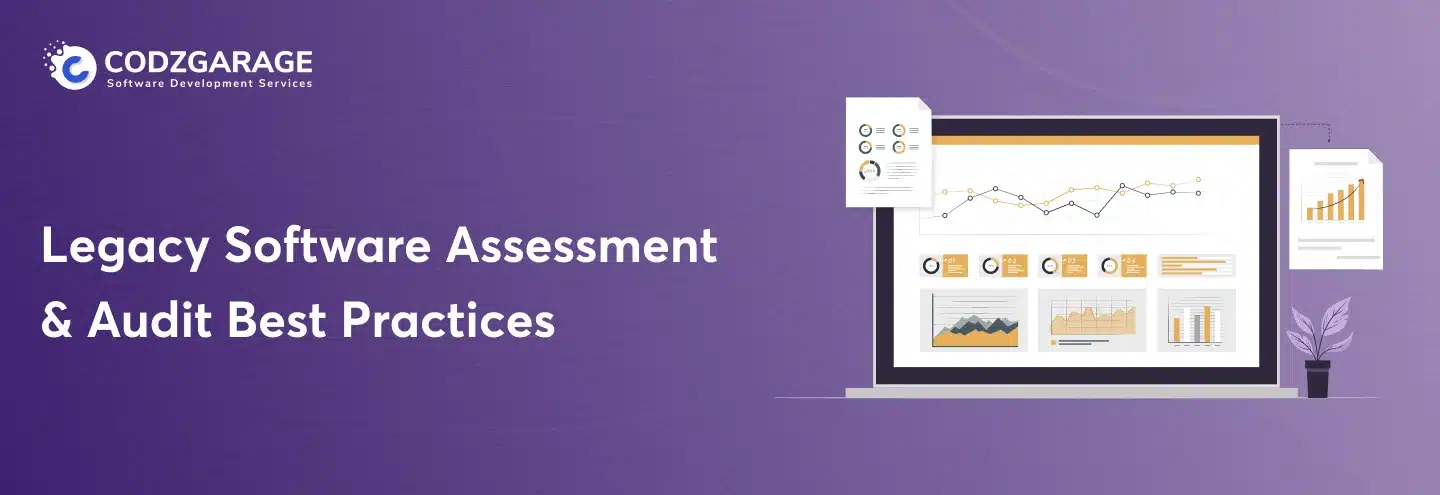Best Legacy System Examples: Who Still Use Legacy Software & Why?
All at sea about legacy systems? Browse through this article to get intensive know-how on legacy software solutions!
Owing to the fact that the internet started dating back to the year 1983, there’s a huge chunk of examples of legacy systems modernization across organizations. As technology keeps changing day in and day out, it causes the software to be obsolete even if it was efficient just 5 years back.
Most of all, organizations don’t fail to use this software even after getting obsolete. Using legacy software may cause reduced productivity, enhanced efforts as well as expense on operations. So, it’s obvious that you get flabbergasted to see why businesses use these outdated systems.
Want to be the one who no longer uses legacy software? Then Codzgarage should be your destination. We provide end-t0-end legacy software migration services to a new platform. Contact us today!
If you’re one of those wondering why organizations use legacy systems, you’d love to browse through this article. In this article, you’ll have examples of legacy software, why and where they’re still in use, with their losses, and why organizations are afraid of modernizing them.
Let’s dig deeper!
What’s a Legacy System?/Legacy Systems Meaning
A legacy system/legacy software/legacy application is a computer software or hardware that’s not been updated for as long as more than 5 years, hence, is obsolete but still in use. The software is being utilized just because it somehow meets the basic needs that it was designed for. Although these systems meet the basic requirements, they’re likely to fail to meet continuously scaling business requirements. Whatever a legacy system does at a certain time, it will continue to do that, but its older technology won’t allow it to interact with new systems.
How to Determine Legacy Systems?
A legacy system is an information system in an organization that was built using technology that is now outdated, but the system is of utmost significance for the organization’s day-to-day operations. The types of legacy systems may be, for instance, computing software/hardware, programming languages, and the like.
Consider having a brief glance at the pointers below, and if you relate to these, you should rest assured that you’re using legacy software!
- End of Life— The tech stack used to create the software is at the end of its rope in terms of developer preference and modernity. Or the vendors have stopped supporting the very technology like the same as with Microsoft’s Windows 7.
- Outmoded Architecture— When you’re dealing with the obstacles caused by legacy code architecture and data.
- No Availability for Updates— Any software getting no updates or new versions is a perfect example of legacy software. This is something that prevents innovation and forces organizations to create new solutions.
- Reduced Scalability— A software incompetent to align or scale as your business scales or a system that fails to assist new functions can be an example of a legacy system.
Legacy Systems Still in Use Across Organizations
Even after being aware of the fact that using legacy systems can bring gargantuan consequences, many organizations are still using legacy systems. We have garnered some examples of those legacy systems to see their consequences and learn from them so that we can employ a result-oriented approach to legacy software modernization and embrace a result that fulfills the need.
Example of Legacy System in the Banking Industry
Banking is among industries that are still making use of obsolete software systems. A report by Financial Times states that the constantly lacking number of developers experienced in COBOL (the programming language driving most bank mainframes) will ultimately lead businesses to opt for choosing another technology.
Example—1 (The Royal Bank of Scotland)
The Royal Bank of Scotland (RBS) is one of the best examples of organizations using legacy systems. Because of using an outdated tech stack, the firm encountered a multitude of IT-related issues, for instance, payment processing glitches and blocked account access. Because the infrastructure was built before the mobile banking age, the mainframes implemented by the very organization happened to come across plenty of hurdles and failed to meet the requirements.
Example of Legacy System in Government Organizations
Not only the banking industry but there are Government organizations that still make use of legacy systems. Take a look at the example below!
Example—2 (Internal Revenue Service)
Caused by a computer glitch, the Internal Revenue Service (IRS) had a consequence in the year dated back to 2017. Because of the computer’s failure, the system blocked the organization’s competencies to process electronically filed tax returns of around five million Americans. The lawmakers stated that the computer system in the very organization had grown obsolete caused by mitigated expenses on maintaining the system for more than the last five years from around $14 billion to $11 billion.
Examples of Legacy Software in Retail & Other Organizations
However, it’s not the example of a specific organization or software; you can have an overall idea of how industries like retail, and others that are expected to remain updated, employ legacy systems.
Example—3 (Retail and Other Commercial Organizations)
You may get flabbergasted to know that many of the manufacturing, retail, and other organizations have still implemented legacy systems, even though they are expected to be updated. Statistics show that in retail, corporations spend 58% of their whole IT budget on maintaining legacy software systems.
You might be wondering why they are using these systems even after spending that large amount of maintenance. The key reason for these organizations to use legacy systems is that the sales terminals make use of Intel 286 computers, and the advanced systems are more likely to face obstacles while working with old systems. Moreover, the fear of cybersecurity issues is another reason these companies fear practicing legacy software modernization.
Example of Legacy System in Background Checking Systems
Not only banks but also background checking systems suffer from exponentially increasing mobile traffic along with diverse data sources. Consequently, the system could hardly deliver the performance as expected. Furthermore, the system is way too complex to migrate into new technologies.
Example—4 (U.S. National Background Investigations Bureau)
The U.S. National Background Investigations Bureau, due to the implementation of obsolete technology, came across an immense intrusion in the year 2015. Eventually, the systems got completely hacked. As per Vice News, the organization had operated without any back of any IT security for a period that’s as long as two years at the time when the incident took place.
Why Are Legacy Systems Still Used?
According to research, senior IT leaders believe that replacing legacy software is likely to mitigate the operating expense by 13% a year while increasing the annual revenue by above 14%. Moreover, around 80% of respondents believe that procrastinating the legacy software modernization will influence an organization’s long-term growth.
Then, why did only one of three companies move towards modernizing their software on time? Why are legacy systems still used? Let’s find the answer!
The Fear of Taking Operational Risks
Businesses require modernizing their legacy software from time to time. Hence, the fear of business disruption may be one of the causes keeping them from stepping towards Software and Application modernization. Industries like healthcare, for instance, can’t afford to stop the operation even for a while.
An investigation by ProPublica in 2019 reveals the fact that several healthcare facilities make use of legacy systems that aren’t protected with even basic security precautions. Apart from that, the medical data of around 5 million Americans are vulnerable to being hacked online. Although it seems difficult for the healthcare industry to update and upgrade the software on time, they should consider it, at least for security purposes.
However, it’s not more than a misconception that legacy system modernization would be a cause to pause business operations— as the old system will still be running while the new systems are getting prepared for execution.
The Fear of Uncertainty
Companies don’t always have the assurance of whether or not the software they modernize will work better than that of now. Or, at times, they’re even concerned, thinking about whether the performance of the software will get worse than that of the present due to technological defects. These risks are likely to prevent organizations from modernizing their outdated systems. Besides, wide-ranging modernization alternatives also tend to confuse them, putting them in a situation where they find it hard to determine which one to implement or which one to pass by.
A business owner thinking about legacy software modernization may ask, “Is it better to re-platform, re-engineer, re-build the app, or apply cloud computing? Or, in case I go with cloud migration, how to know the does and don’ts of software migration to the cloud? The question is difficult, and the answer to this, too, will be different depending on the variety of businesses. Making changes in a system may be even more cumbersome. While altering it entirely can destroy your business value, even when the software and application modernization gets done correctly, and the system performs well, you need to train your staff to operate the application well.
There’s a Custom Solution That Still Works
This may be another cause preventing organizations from modernizing legacy systems. When organizations started going digital, they created custom software solutions specifically tailored to their needs. Companies use those systems today because they serve their purposes; hence, they seem to be a reliable, safer alternative. This may be one of the reasons why businesses are afraid of modernizing their existing software.
Risks of Keeping Legacy Software in Your Company
However, businesses tend to use legacy systems because it seems beneficial; using those obsolete systems may not be the right choice because of compatibility, maintenance, and other issues. Have a look at the pointers below to know the negatives of retaining legacy systems in your company!
- Deteriorating Productivity— Using legacy systems is likely to hinder a company’s competencies from innovating and adapting to the constantly changing business needs. This could result in reduced productivity and competitiveness in the market.
- Lack of Compatibility— Outdated software may not be compatible with the new hardware systems, causing operational, and deteriorated capability to align with modern technologies.
- Limited Assistance— An older system is usually less likely to get support from the vendor for additional updates, leaving users without access to critical updates, patches, and other technical support.
- Vulnerability in Security— Legacy software is likely to have outdated security protocols, leading them to be more susceptible to the threats like cyber-attacks and data breaches.
- Increased Expense— The maintenance of a legacy system may require specific talents and hardware that is difficult to find out, enhancing the feasibility of costing you a small fortune on updates.
Wrapping Up:
That’s all there’s to it! That’s all about the examples of legacy software solutions and which organizations make use of them. We did a thorough exploration of the topic right, from what legacy systems and types of legacy systems to the reasons why legacy systems are still used and why businesses procrastinate to modernize them. Now, I hope you have got all an understanding of how an obsolete legacy system can tyrannize your business growth.
So, as you know, the problems with legacy systems, now there’s no reason to tolerate them anymore. If you’re thinking of modernizing your existing legacy system, get connected to a custom software development company and modernize your legacy systems so that it becomes like a dream come true!
Want
Desktop to web migration?Hire Experts from us!
- Accomplished engineers
- Excellent solutions
- Delivery in deadlines




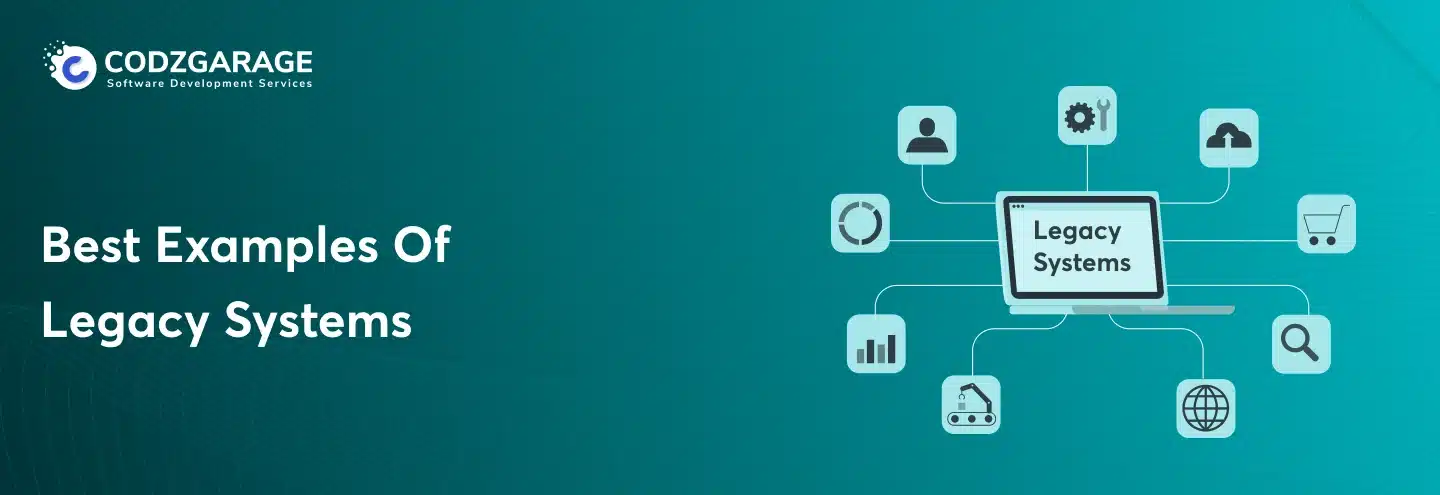

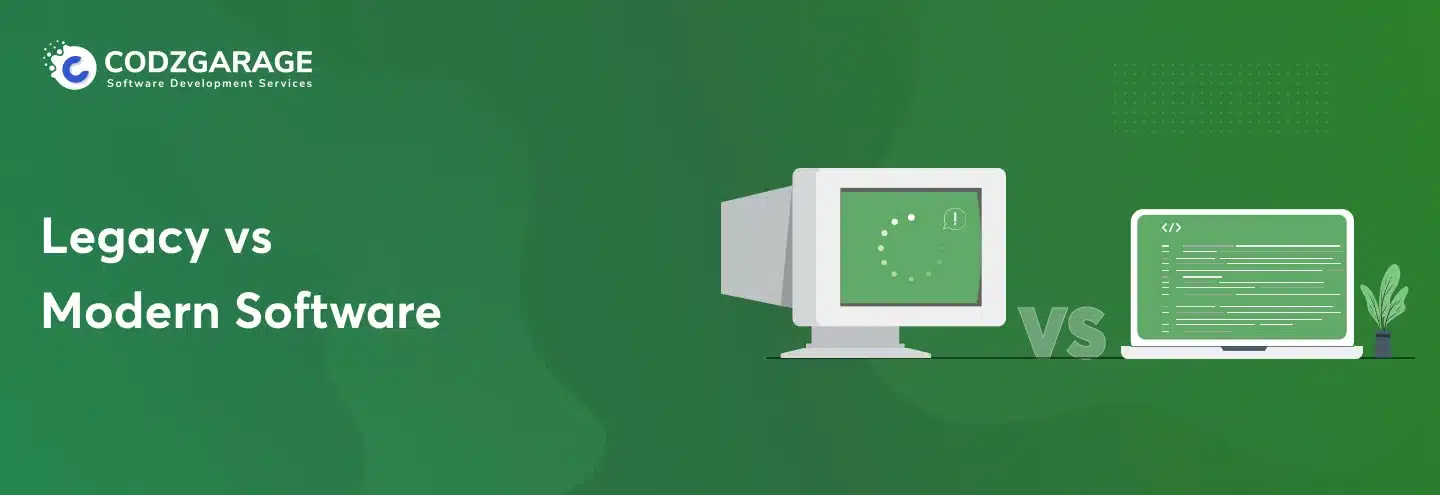
 Paresh Kapuriya
Paresh Kapuriya 